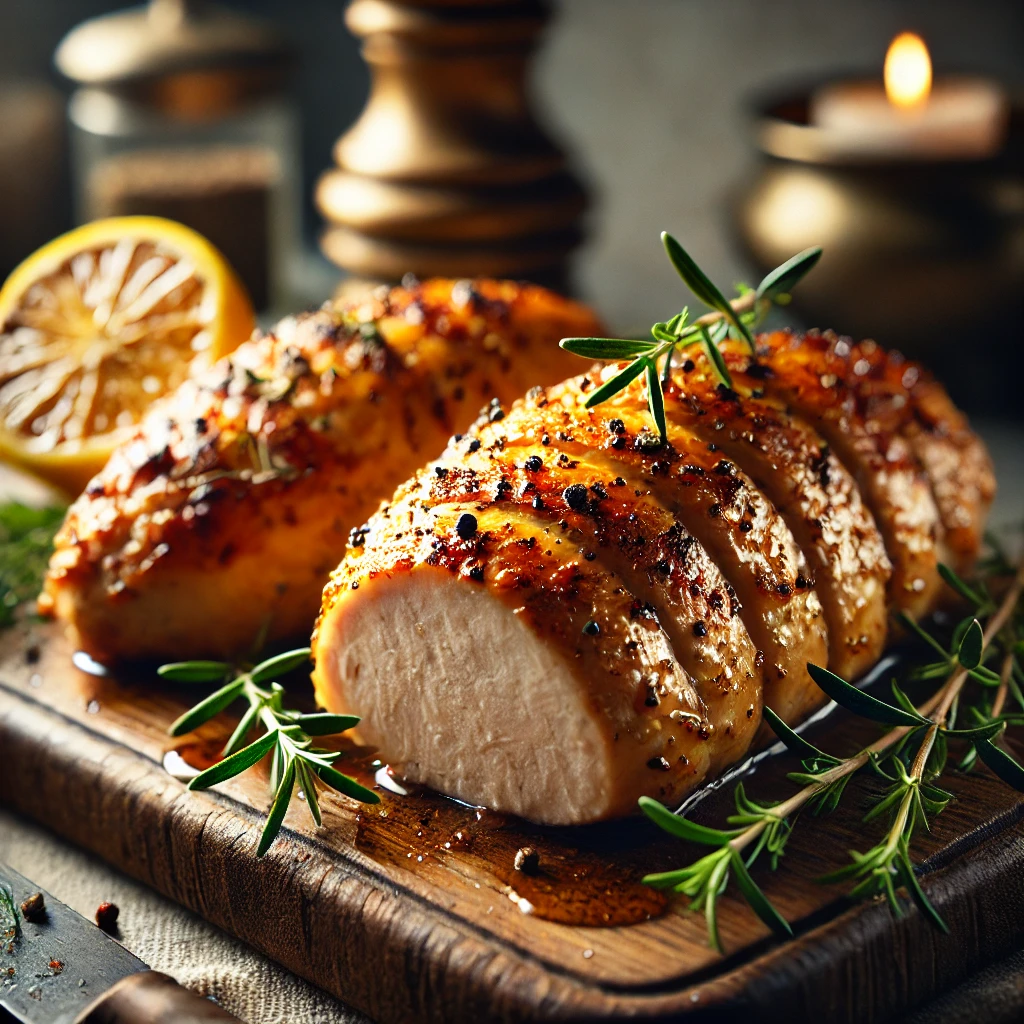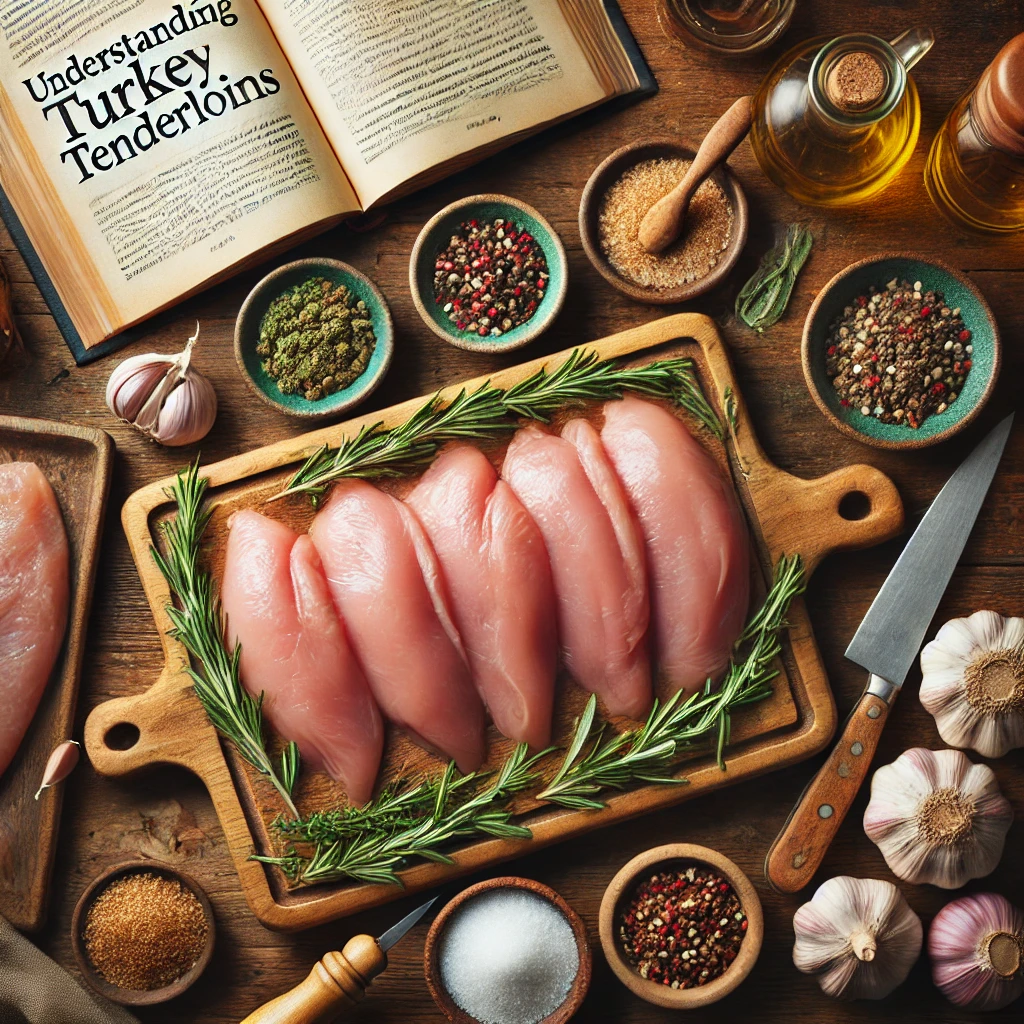Turkey tenderloins might just be one of the best-kept secrets in the kitchen! Often overshadowed by roasted turkey breasts or legs during the holiday season, turkey tenderloins deserve a moment in the spotlight. These are the long strips of meat found beneath turkey breasts, and they are wonderfully lean and tender. Perfect for a weeknight dinner or a special family gathering, cooking turkey tenderloins can be a delightful adventure for your taste buds. Whether you grill, bake, or sauté them, turkey tenderloins promise a juicy and flavorful experience with the right techniques. If you’re tired of the same old chicken or beef, turkey tenderloins provide a refreshing and nutritious alternative.

Understanding Turkey Tenderloins

Turkey tenderloins are an incredible choice for those who want something delicious and healthy on their dinner table. While they may not be as widely talked about as some other cuts, like chicken breasts or pork chops, turkey tenderloins are beginning to gain the popularity they deserve. Let’s dive deep to see what makes these tender cuts shine!
What are Turkey Tenderloins?
Turkey tenderloins are the small strip of lean muscle located beneath the turkey breast. This cut of meat is boneless and skinless, and what sets it apart is the tenderness—hence the name tenderloin. It’s similar in shape and size to a pork or beef tenderloin, making it a versatile ingredient. Unlike other types of turkey such as the whole bird that can take hours to cook, turkey tenderloins cook quickly, which makes them perfect for weeknight dinners when you’re pressed for time.
Nutritional Benefits
Now, let’s talk about why turkey tenderloins should be on your radar from a nutritional standpoint. Turkey tenderloins are a fantastic source of lean protein. A typical serving size is low in calories and saturated fats while being rich in necessary vitamins and minerals such as niacin, vitamin B6, phosphorus, and selenium. Here’s a quick glance at some of the nutritional benefits:
– High in Protein: Ideal for muscle building and repair.
– Low in Calories: Perfect for those watching their calorie intake.
– Rich in Vitamins and Minerals: Supports overall health, including immune function and energy metabolism.
– Lean Meat Option: Less fat compared to other protein sources.
Because of their nutritious content, turkey tenderloins can be a great addition to the diets of fitness enthusiasts, those aiming for weight loss, or anyone striving for a balanced diet.
Popularity in Modern Cooking
Turkey tenderloins have been embraced in modern cooking, inspired by a trend toward healthier eating. With people becoming more conscious about their nutritional choices, turkey tenderloins provide a solution for healthier meals without sacrificing flavor. Not only are they a go-to during holiday seasons, but they are now becoming a staple in everyday cooking across various cuisines. From classic American dishes to inventive international ones, people are getting creative with turkey tenderloins.
Chefs and home cooks alike appreciate the tenderloin’s adaptability—a blank canvas for any flavor profile. You can grill, bake, roast, or sauté them, and they pair well with a multitude of seasonings, marinades, and sauces. This makes turkey tenderloins a preferred ingredient for anyone looking to experiment in the kitchen.
Preparing Turkey Tenderloins for Cooking
Once you’ve decided to make turkey tenderloins, it’s time to get started on preparation. The best meals begin long before you start cooking, with selecting quality cuts, gathering essential tools, and using proper marination techniques.
Selecting Quality Cuts
The first step in preparing turkey tenderloins is selecting the best quality available. Here are some tips for ensuring you pick the perfect cuts:
– Look for Freshness: Choose tenderloins that are fresh or have a recent packaging date. The fresher, the better!
– Check the Color: High-quality turkey tenderloins will have a light pink or white color, indicating freshness.
– Avoid Excess Moisture: Be wary of packages with excessive moisture or a slimy texture, as these could indicate spoilage.
– Consider Size: Choose tenderloins that are relatively the same size for even cooking.
Buying from a reputable butcher or grocery store and seeking organic or free-range options can also guarantee a higher quality product.
Essential Tools and Ingredients
Before diving into cooking, ensure you have all the necessary tools and ingredients on-hand for a smoother cooking process:
– Sharp Knife: For cutting and trimming the tenderloin if necessary.
– Cutting Board: A sturdy base for preparing your turkey.
– Cooking Thermometer: To ensure the meat reaches the ideal internal temperature for safety (around 165°F or 73.9°C).
– Mixing Bowls: For preparing marinades and seasoning blends.
– Baking Dish or Skillet: Depending on whether you plan to bake, roast, or sauté the tenderloins.
– Olive Oil or Non-Stick Spray: For cooking and preventing sticking.
– Variety of Seasonings and Herbs: Remember that turkey tenderloins absorb flavors well, so stock up on seasoning options based on your recipe.
Proper Marination Techniques
Marinating can elevate your turkey tenderloins from good to extraordinary. A good marinade not only adds flavor but can also tenderize the meat further. Here are some tips for marinating turkey tenderloins effectively:
– Create a Well-Balanced Marinade: You’ll typically need a mix of acid (like lemon juice or vinegar), oil (such as olive oil), and herbs/spices (think garlic, rosemary, thyme, or paprika).
– Time it Right: Allow the tenderloins to sit in the marinade for at least 30 minutes up to 24 hours in the refrigerator. Longer marination adds deeper flavor, but don’t exceed a day as the acids may start to break down the fibers too much.
– Seal the Deal: Use resealable plastic bags or airtight containers to ensure the turkey is fully submerged in the marinade and flavors are sealed in.
– Massage the Marinade: Gently massage the tenderloins through the bag to fully coat the meat and ensure an even distribution of flavors.
By prepping in advance, you’re setting yourself up for a tasty success with turkey tenderloins! With this foundational understanding and preparation, you’re well on your way to creating a dish that’s not only wholesome but packed with flavor.
Cooking Techniques for Turkey Tenderloins

Turkey tenderloins are a lean and tasty cut that can transform any meal into a mouth-watering experience. Whether you’re a master chef or a novice in the kitchen, there are several ways you can prepare turkey tenderloins that’ll surely impress. Let’s dive into some tried and true cooking techniques that’ll make your turkey tenderloins the star of the dinner table.
Grilling Turkey Tenderloins
Grilling is ideal for busy weeknights or weekend barbecues. It’s quick, easy, and imbues your turkey tenderloins with that coveted smoky flavor. Here’s how you can make your grilling experience delightful:
– Marinate Wisely: Before grilling, marinate your turkey tenderloins for at least two hours. A simple marinade of olive oil, lemon juice, garlic, and herbs works wonders on the grill.
– Preheat the Grill: Preheat your grill to medium-high heat. This ensures your tenderloins cook evenly and get those beautiful grill marks.
– Cook to Perfection: Place the turkey tenderloins on the grill and cook for about 6-7 minutes on each side. Make sure to reach an internal temperature of 165°F to ensure they’re cooked safely.
Baking Tenderloins to Perfection
When the weather’s not so great for grilling or you want an easy indoor cooking option, baking is a fantastic choice. Here’s a simple guide to baking turkey tenderloins that offer juicy results:
– Preparation is Key: Start by preheating your oven to 375°F. Lightly oil your baking dish to prevent sticking and place your seasoned tenderloins in the dish.
– Add Moisture: To keep the turkey moist, consider adding some chicken broth or white wine to the dish. Cover the dish with aluminum foil for more even cooking.
– Crisp the Top: Bake the tenderloins for 25-30 minutes initially, then remove the foil. Bake for an additional 10-15 minutes to let the top brown.
Sautéing for Flavorful Results
Sautéing is perfect when you’re aiming for a quick meal with a lovely sear on the turkey. This method is all about getting flavor fast:
– Choose the Right Pan: Use a large skillet that allows enough space for the tenderloins, ensuring they cook evenly.
– Get the Temperature Right: Heat the skillet with some olive oil over medium-high heat until the oil is shimmering.
– Quick Cooking: Sear the tenderloins for 3-4 minutes per side to achieve a golden brown crust. Lower the heat and continue cooking for another 10 minutes or until the tenderloins are fully cooked.
Flavor Enhancements
While turkey tenderloins are delicious on their own, a few flavor enhancements can elevate your meal to a whole new level. Let’s explore how you can turn those tenderloins into a culinary masterpiece.
Using Herbs and Spices
Herbs and spices are the simplest way to pack in loads of flavor without extra calories. Here are some favorites to consider:
– Classic Pairings: Thyme, rosemary, sage, and oregano complement turkey wonderfully.
– Bolder Choices: Try cumin, smoked paprika, or even a touch of cayenne for a kick.
– Season with Salt and Pepper: Never underestimate the power of good old salt and pepper to bring out the flavors.
Sauces and Glazes
Adding a sauce or glaze not only boosts flavor but also adds a nice shine to your turkey. Here are a few ideas:
– Honey Mustard Glaze: Combine honey, Dijon mustard, and a splash of apple cider vinegar for a sweet and tangy glaze.
– Teriyaki Sauce: A favorite for those who love a sweet-savory mixture with an Asian twist.
– Simple Pan Sauce: After cooking the turkey, deglaze the pan with some broth or wine, add butter, and reduce until thickened for a rich and luscious sauce.
Stuffing Ideas for Extra Flavor
Stuffing your turkey tenderloins can provide a surprising burst of flavor with every bite. Here are some mouth-watering stuffing ideas:
– Spinach and Feta: A Mediterranean blend of sautéed spinach, garlic, and feta cheese for a refreshing fill.
– Apple and Cranberry: For a sweet and savory combination, mix diced apples with cranberries and a hint of sage.
– Pesto and Mozzarella: Spread basil pesto and add slices of fresh mozzarella for a gooey and herby delight.
By experimenting with these techniques and flavor enhancements, you’ll be cooking turkey tenderloins that will have everyone coming back for seconds. Remember, the secret lies in choosing fresh ingredients and taking the time to season and cook the tenderloins to perfection. Bon appétit!
Serving Suggestions for Turkey Tenderloins
When it comes to serving turkey tenderloins, the possibilities are endless. These tasty and versatile cuts make a wonderful centerpiece for various meals, whether you are hosting a cozy family dinner or simply prepping meals for the week. Here are some delightful serving suggestions to take your turkey tenderloins to the next level:
1. Classic Pairings
– Mashed Potatoes and Gravy: A classic that never fails! Serve your tenderloins with a side of creamy mashed potatoes. Don’t forget to drizzle on some savory gravy for that comforting, homestyle feel.
– Roasted Vegetables: Balance the richness of the turkey with a mix of colorful roasted vegetables like carrots, Brussels sprouts, and sweet potatoes.
– Cranberry Sauce: A nod to Thanksgiving flavors, cranberry sauce adds a sweet and tangy zing to your plate.
2. Fresh and Light
– Quinoa Salad: Pair your turkey tenderloins with a fresh quinoa salad mixed with cucumbers, tomatoes, feta cheese, and a splash of lemon vinaigrette for a refreshing meal.
– Steamed Asparagus: Lightly seasoned asparagus is a crisp and healthy side that complements tenderloins beautifully.
– Zucchini Noodles: For a low-carb option, serve with spiralized zucchini noodles tossed in olive oil and garlic.
3. International Flavors
– Teriyaki Glazed: Brush your tenderloins with a homemade teriyaki glaze and serve them alongside a mound of jasmine rice and steamed broccoli for an Asian-inspired treat.
– Italian-Style: Rub your tenderloins with Italian herbs and serve with a side of risotto and caprese salad for a taste of Italy.
– Mexican Twist: Add a touch of spice with a chili-lime marinade, and serve with corn tortillas, avocado slices, and a sprinkle of cotija cheese for a Mexican feast.
4. Creative Sandwiches and Wraps
– Turkey Tenderloin Sandwich: Layer thin slices of turkey tenderloin on a ciabatta roll with arugula, tomato slices, and a smear of basil aioli for a flavorful sandwich.
– Turkey Wraps: Wrap tenderloin slices with lettuce, cucumber, and hummus in a soft tortilla for a quick and healthy lunch option.
– Pita Pockets: Stuff whole grain pitas with turkey, chopped veggies, and a dollop of tzatziki sauce for a Mediterranean-inspired pocket sandwich.
5. One-Pot Wonders
– Turkey and Rice Casserole: Combine turkey tenderloins with brown rice, a creamy sauce, and your choice of veggies. Bake until everything is deliciously melded together.
– Skillet Turkey and Veggies: In one skillet, cook cubed turkey alongside bell peppers, onions, and your favorite spices for a quick, hearty meal.
– Slow Cooker Stew: Let your slow cooker do the work by tossing turkey tenderloins, potatoes, carrots, and a savory broth together for a warming stew.
With an array of options, turkey tenderloins are sure to satisfy every taste bud around the table. Keep experimenting with different sides and flavors to create a feast that you and your loved ones will relish.
Conclusion
Turkey tenderloins are a hidden gem in the culinary world, and with their lean meat, quick cooking time, and ability to take on a wide range of flavors, they are definitely worth adding to your rotation. Whether you’re a seasoned cook or just starting out, cooking with turkey tenderloins can be both simple and rewarding. Not only can you prepare them in countless ways, but they also fit seamlessly into a variety of dietary preferences, from heart-healthy meals to indulgent feasts.
To sum it all up:
– Versatility: Turkey tenderloins are versatile and can be used in an endless array of recipes, from classic comfort meals to dishes inspired by international cuisines.
– Nutritional Benefits: As a lean protein, turkey tenderloins can be a healthier choice, suitable for those looking to maintain a balanced and nutritious diet.
– Quick and Easy: They are typically quick and easy to prepare, making them perfect for busy weeknights or last-minute dinners.
– Flavorful Options: With the right marinating or seasoning technique, turkey tenderloins can boast an explosion of flavors, guaranteeing a delicious experience every time.
Next time you’re at the grocery store, don’t overlook those turkey tenderloins! Grab a pack, try out some of the cooking techniques we’ve discussed, and experiment with new pairings to create meals that everyone will love. Having these wholesome pieces in your culinary repertoire can turn everyday dinners into something memorable. Enjoy your cooking adventure, and happy eating!
FAQ
Can I substitute turkey tenderloins for chicken in recipes?
Yes, definitely! Turkey tenderloins are a great alternative to chicken. Here’s why you might want to consider the swap:
– Flavor: Turkey has a mild flavor that can easily take on the spices and seasonings you love.
– Nutrition: Turkey is lean and packed with protein, making it a healthy choice for any meal.
What’s the best way to season turkey tenderloins?
There are many exciting ways to season your turkey tenderloins. Here are a few ideas to inspire you:
– Herb Rub: Mix up chopped rosemary, thyme, and sage for a classic herb rub.
– Spicy Kick: Try a blend of smoked paprika, cayenne pepper, and garlic powder for a zesty touch.
– Citrus Burst: Combine lemon zest, orange juice, and a bit of honey for a refreshing, sweet flavor.
How long should I cook turkey tenderloins?
The cooking time for turkey tenderloins largely depends on the method you choose. Typically, it takes about 25-35 minutes at 375°F in the oven. Remember, the key is to ensure the internal temperature hits 165°F using a meat thermometer to keep it safe and juicy.

1 thought on “Turkey Tenderloins”